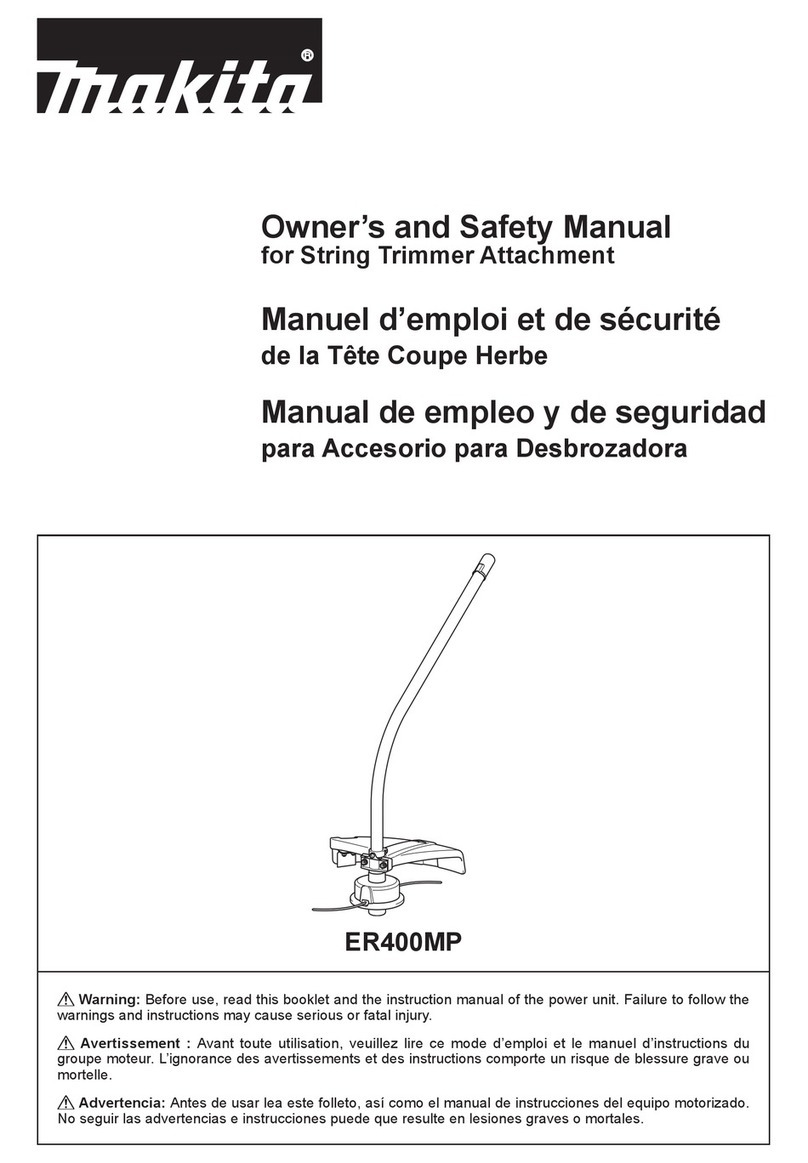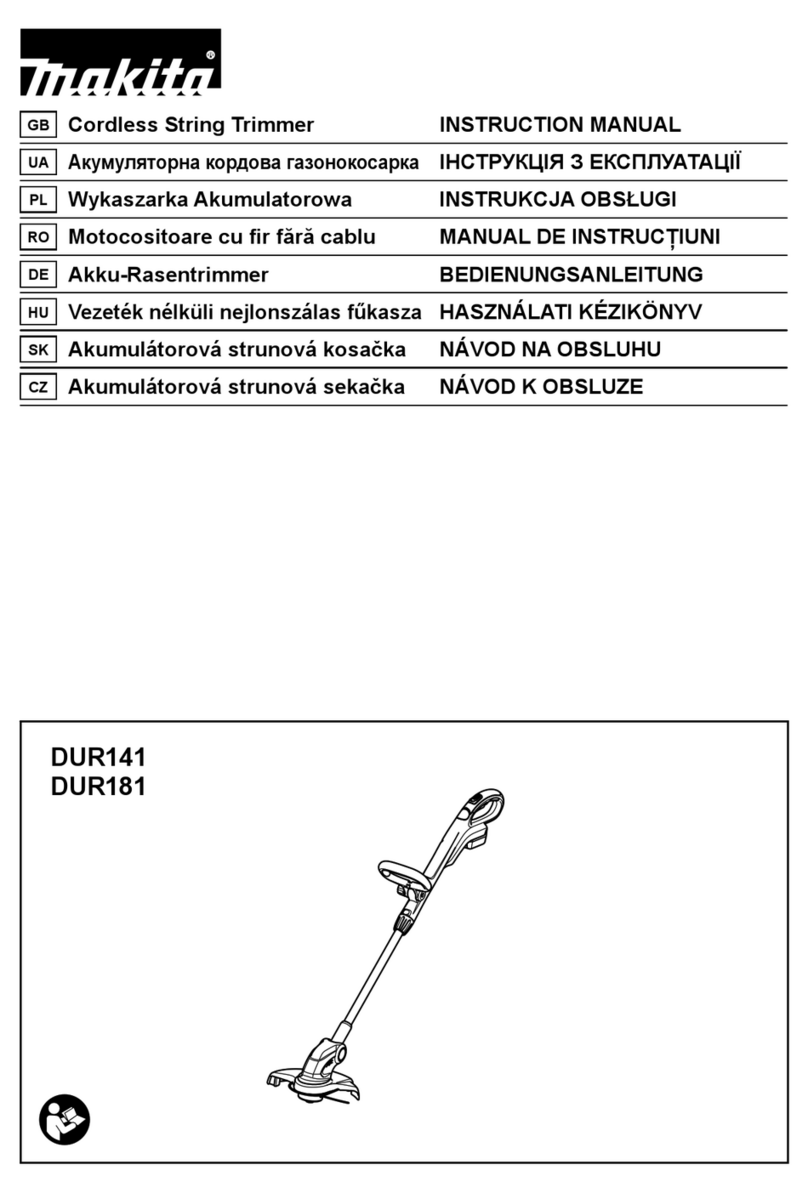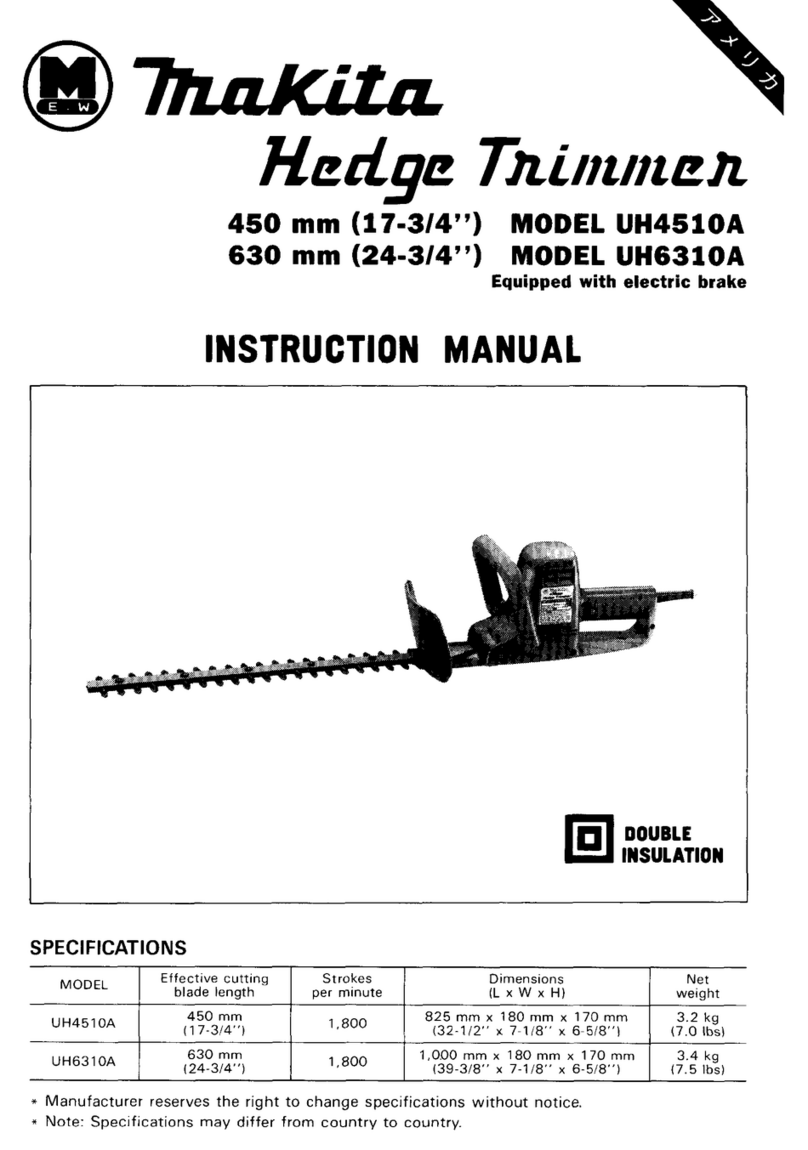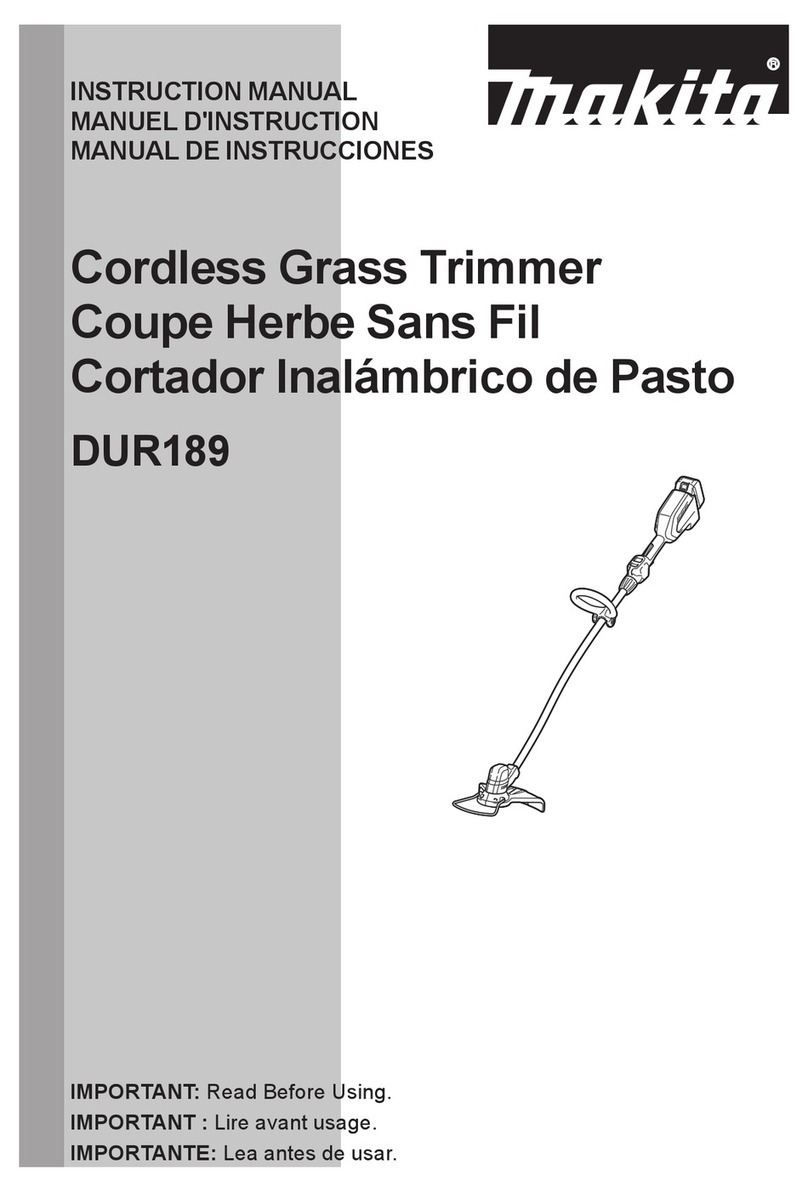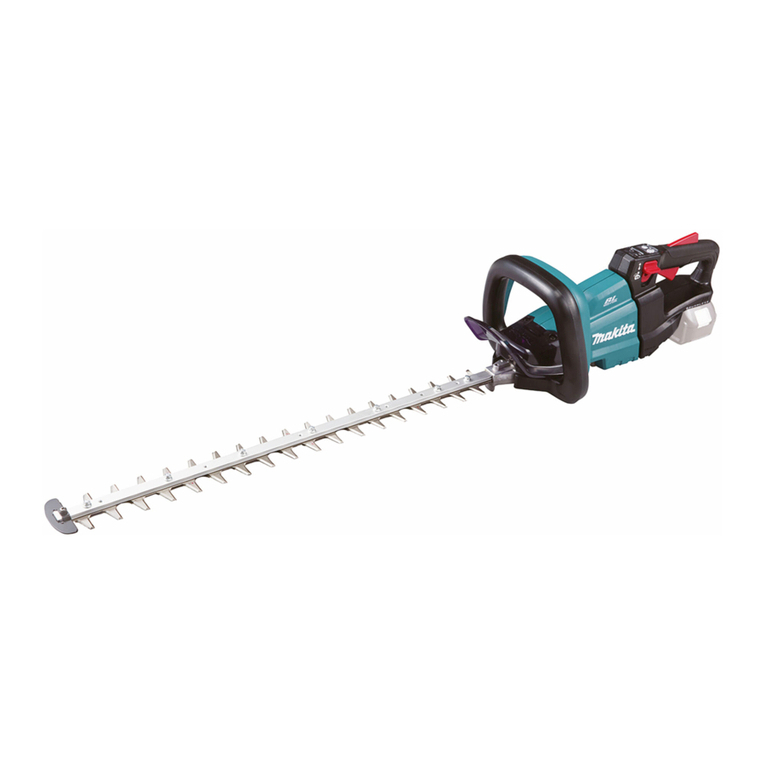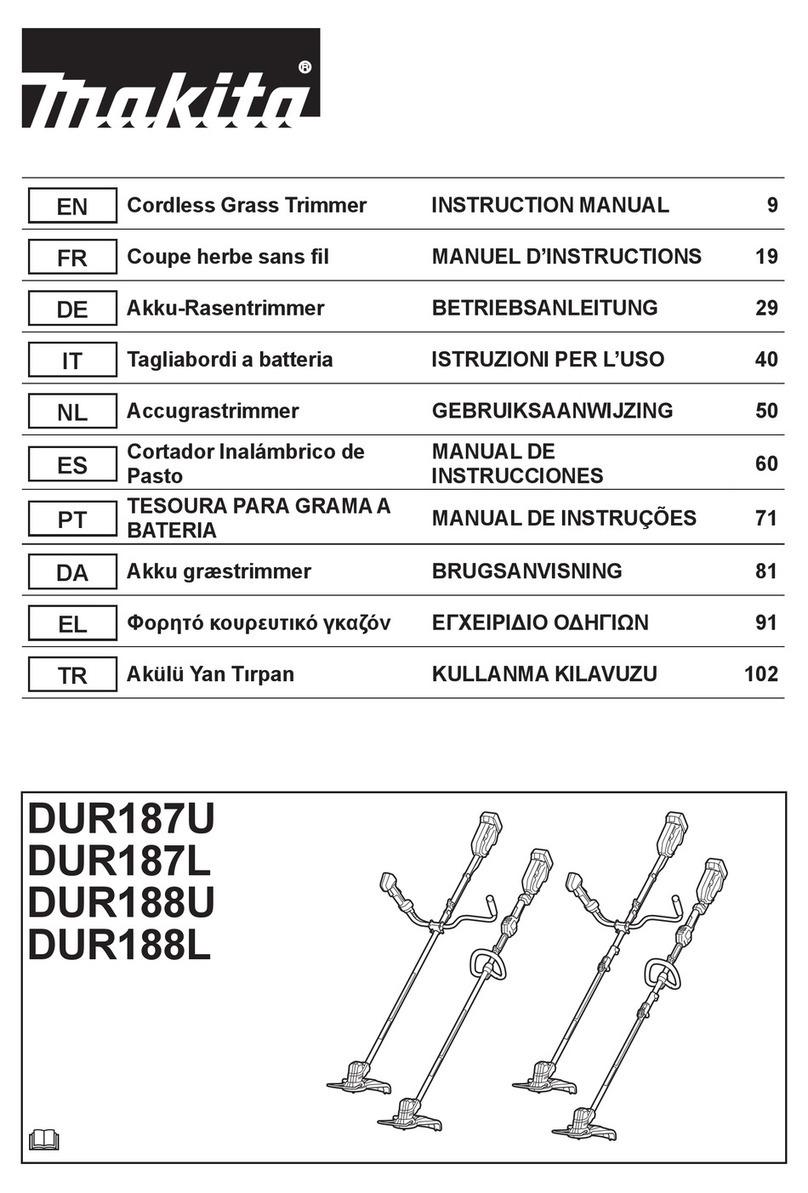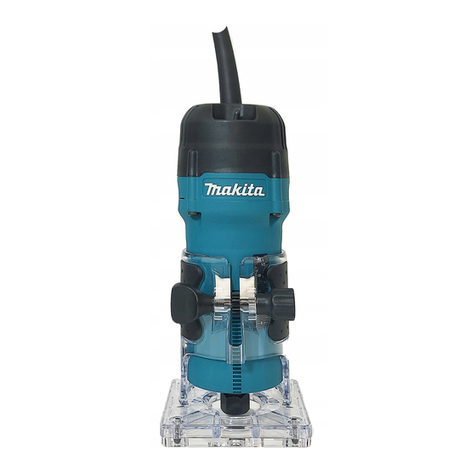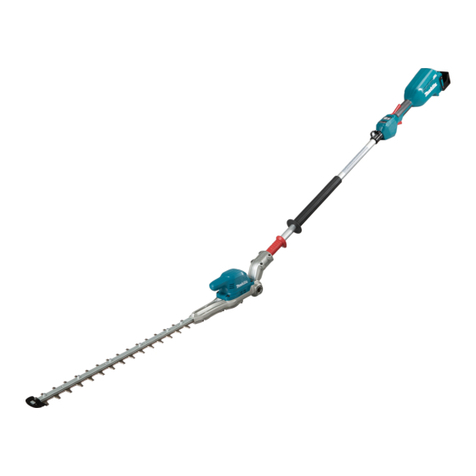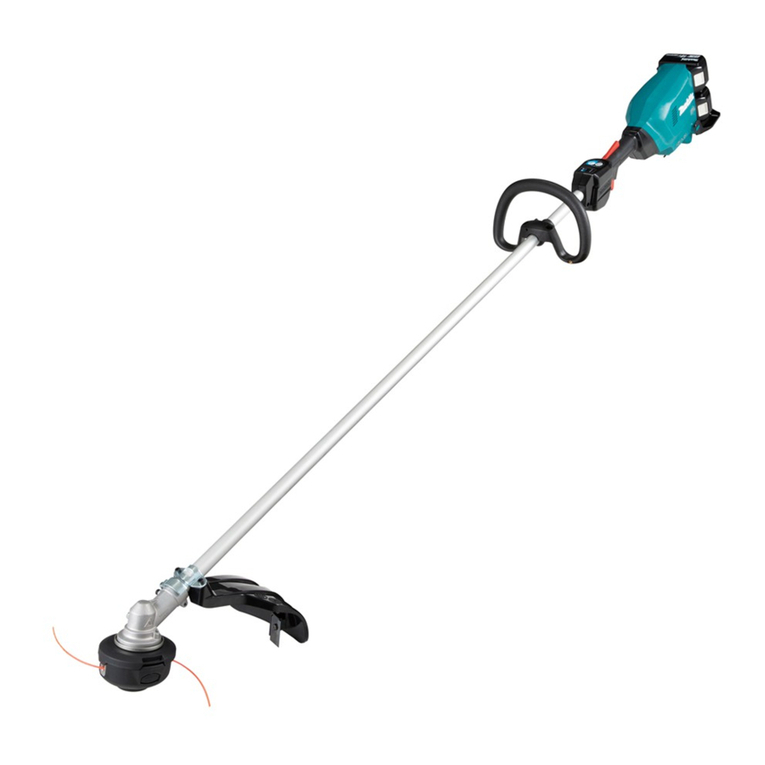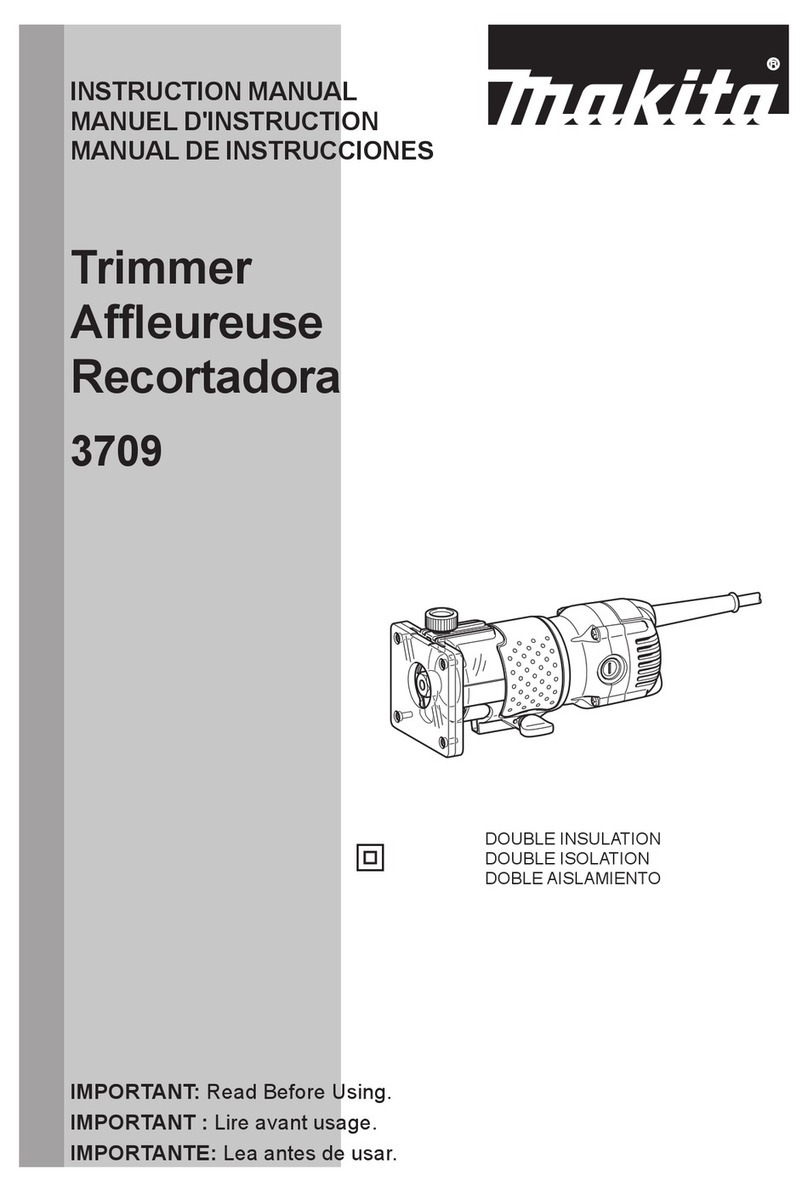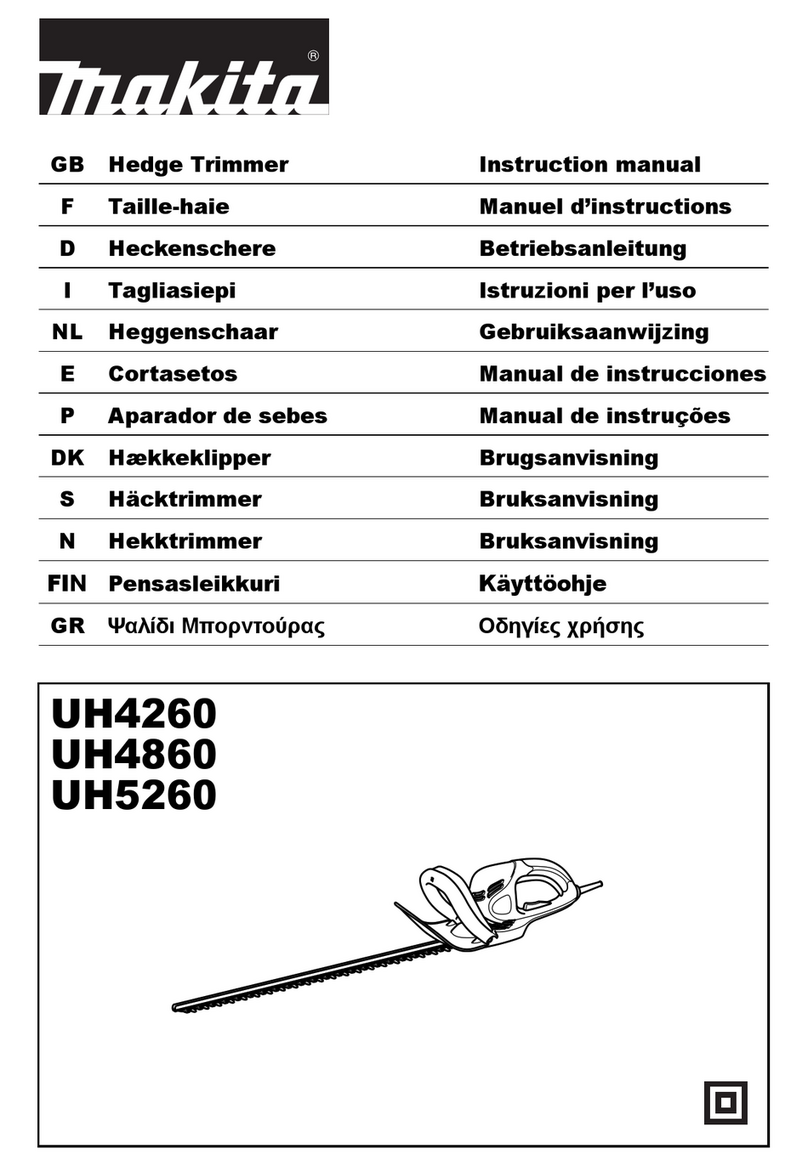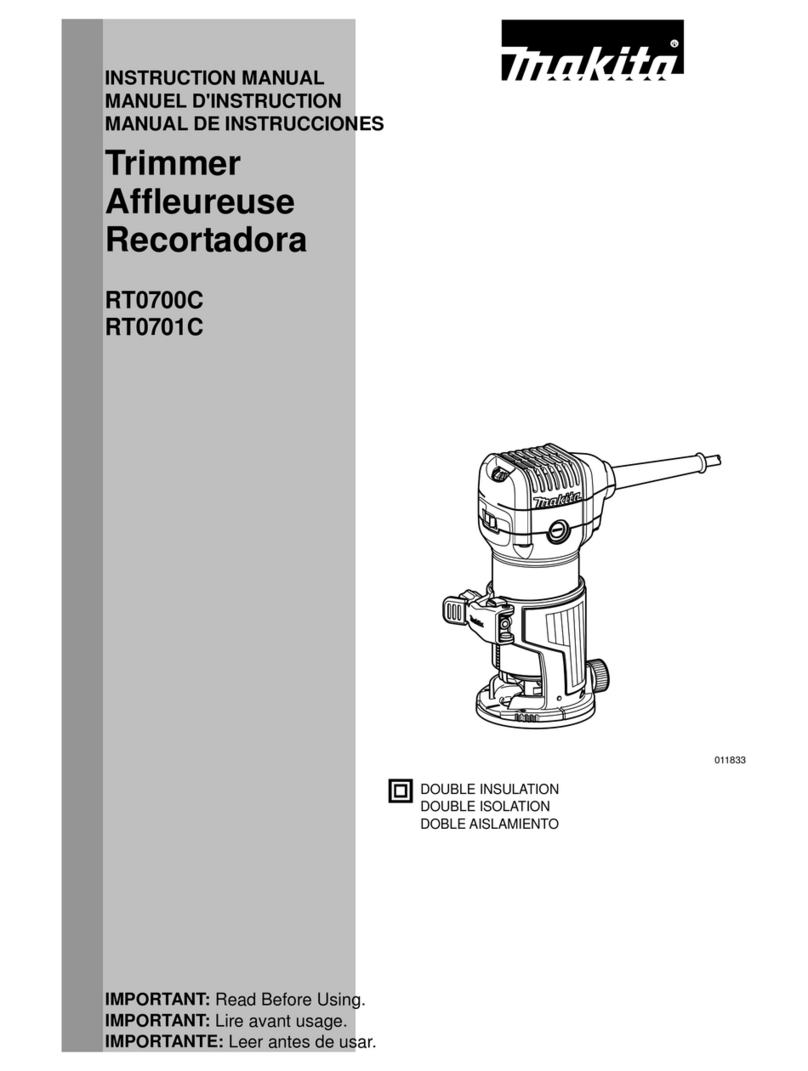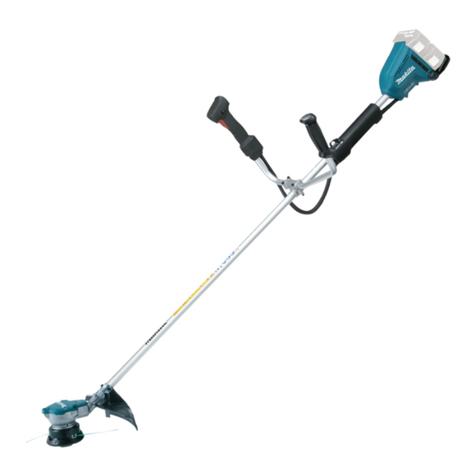
10 ENGLISH
NOTE: The declared noise emission value(s) has
been measured in accordance with a standard test
another.
NOTE: The declared noise emission value(s)
exposure.
WARNING: Wear ear protection.
WARNING:
The noise emission during actual
value(s) depending on the ways in which the tool is
used especially what kind of workpiece is processed.
WARNING:
Be sure to identify safety measures
to protect the operator that are based on an estima-
tion of exposure in the actual conditions of use (tak-
ing account of all parts of the operating cycle such
it is running idle in addition to the trigger time).
Vibration
Applicable standard : EN62841-4-2
Model Left hand (Front grip / Handle) Right hand (Rear grip)
ah(m/s2)
(m/s2)
ah(m/s2)
(m/s2)
DUN500W 4.7 1.5
2.5 m/s2or less
1.5
DUN600L 3.8 1.5 2.7 1.5
NOTE: The declared vibration total value(s) has been measured in accordance with a standard test method and
NOTE:
WARNING:
value(s) depending on the ways in which the tool is used especially what kind of workpiece is processed.
WARNING: Be sure to identify safety measures to protect the operator that are based on an estimation
of exposure in the actual conditions of use (taking account of all parts of the operating cycle such as the
EC Declaration of Conformity
For European countries only
to this instruction manual.
SAFETY WARNINGS
General power tool safety warnings
WARNING: Read all safety warnings, instruc-
with this power tool. Failure to follow all instructions
Save all warnings and instruc-
tions for future reference.
(cordless) power tool.
Cordless Pole Hedge Trimmer
Safety Warnings
1. Keep all parts of the body away from the blade.
Do not remove cut material or hold material
to be cut when blades are moving. Blades
moment of inattention while operating the hedge
2. Carry the hedge trimmer by the handle with the
blade stopped and taking care not to operate
any power switch.
trimmer will decrease the risk of inadvertent start-
3. When transporting or storing the hedge trim-
Proper handling
of the hedge trimmer will decrease the risk of
4. When clearing jammed material or servicing
and the battery pack is removed or discon-
nected. Unexpected actuation of the hedge trim-
5. Hold the hedge trimmer by insulated gripping
surfaces only, because the blade may contact
hidden wiring. Blades contacting a "live" wire
-
mer "live" and could give the operator an electric
shock.



